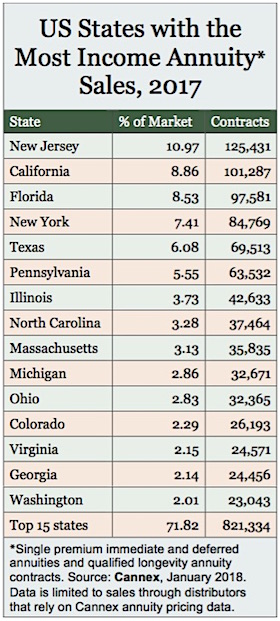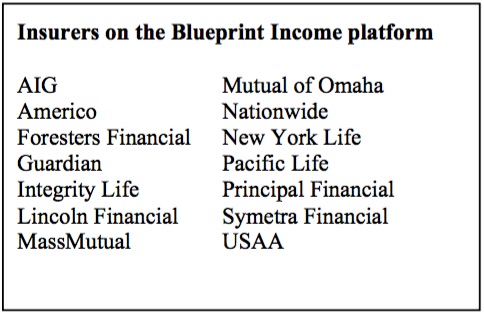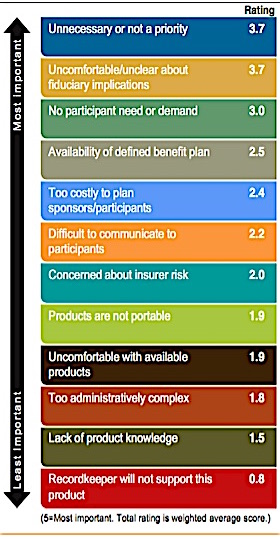
The other day I was interviewing an Irish crypto-currency entrepreneur and the topic of 401(k) plans came up. The 401(k) system appears to be a single, homogeneous, nationwide program when viewed from a distance, I said. Since every plan follows the same Labor Department rules, a casual observer might assume that all plans must be the same.
So he looked puzzled when I said that the quality of 401(k) plans can differ dramatically from one company to another. The differences are regressive: They amplify whatever economic inequalities already exist in the workplace.
Good plans and good jobs tend to go together, and bad plans and bad jobs tend to go together. If you can afford to save a lot, and if your company offers a 401(k) with a generous match and maybe a voluntary tax-deferred contribution to your account, you’ll probably retire with an adequate nest egg.
But if you work in a company that doesn’t offer a plan, or offers a plan with no “match” and high fees, or defaults you into a permanent contribution of 3% per year, or your job is low-paid and you change jobs frequently, or if you need to raid your 401(k) to cover an emergency expense, then your chance of retiring with enough money is a lot smaller. In fact, you might be better off contributing to your own private Roth IRA at a no-load fund supermarket.
For most of us, this arrangement makes sense. To get better pay and benefits, you compete for them. Inequality can be a good thing: It rewards effort and drives progress. Besides, Social Security helps buffer the inequalities in retirement by replacing a higher percentage of lower-paid workers’ earnings.
But this arrangement makes no sense at all to Teresa Ghilarducci, Ph.D., the progressive economist and 401(k) gadfly at the New School, where she directs the Retirement Equity Lab. She’s outraged by it. And she’s not willing to wait for proposed innovations like state-sponsored mandatory savings plans or private multi-employer plans (MEPs) to level the playing field.
She’d like to replace 401(k)s with a universal mandatory defined contribution plan whose balance would automatically convert to a low-cost life annuity at retirement. This new system, she says, would distribute the benefits of the government’s 12-figure annual tax expenditure for retirement savings—the annual cost of tax deferral in terms of reduced tax receipts—more equally (though contribution levels would still vary) than the 401(k) system largely because it would cover all workers instead of just the 50% or so of workers that participate in 401(k) plans at any given time.
In support of her idea, she and New School colleagues Andrew Webb, research director at the Schwartz Center for Economic Policy Analysis, and grad student Siavash Radpour, presented a paper at the American Economic Association’s annual meeting, held in Philadelphia a few weeks ago.
“We find that retirement wealth is highly unequally distributed. We also found that mean and median total retirement wealth, conditional on owning any wealth, changed little over the period 1992-2010 despite older workers needing more wealth. A shift from DB to DC was associated with an increase in retirement wealth inequality over the period from 1992 to 2010, reflecting the rise in share of older workers who have no retirement wealth.
“A DC system may have increased inequality by variation in wealth because of variation in financial returns, because of one’s age cohort, because one faces the risk of choosing a bad portfolio, or paying excessive fee risk, or having an employer who does not sponsor a plan or who chooses bad investment alternatives,” the paper said.
Because of Ghilarducci’s revolutionary views—her solution to retirement inequality would entail nothing less than a nationalization of the enormous private retirement industry in the U.S.—talk radio host Rush Limbaugh once called her “the most dangerous woman in America.”
But she has in recent years gained a mainstream ally in Blackstone COO Hamilton “Tony” James. Their book (Rescuing Retirement: A Plan to Guarantee Retirement Security for All Americans, Columbia Business School Publishing, 2017) has been endorsed by former New York mayor Michael Bloomberg and former Treasury Secretary Robert Rubin. Its second edition has just been published.
I think Ghilarducci’s voice needs to be heard. If competition drives progress, then we need to consider competing views about defined contribution plans. In fact, her idea isn’t much different from proposals in other countries for creating defined contribution plans that include retirement income components. (See today’s story in RIJ on the new Royal Mail “defined ambition” plan in the UK.)
But to gain more allies in the U.S., she’ll have to convince enough people that (a) tax deferral is a true federal expenditure and not just a deferral; that (b) luck plays a large role in human and corporate success and society needs to protect people who have the worst luck; and that (c) at a point, income inequality becomes economically counter-productive, even for the winners.
I don’t expect that to happen. In 2019, depending on how the mid-term elections affect the balance of power in Congress, we may begin to hear arguments from Speaker of the House Paul Ryan and others that Social Security costs America too much and needs to be cut. Not only is there very little political will to do what Ghilarducci recommends, there may not even be enough will to preserve Social Security as we know it.
© 2018 RIJ Publishing LLC. All rights reserved.














